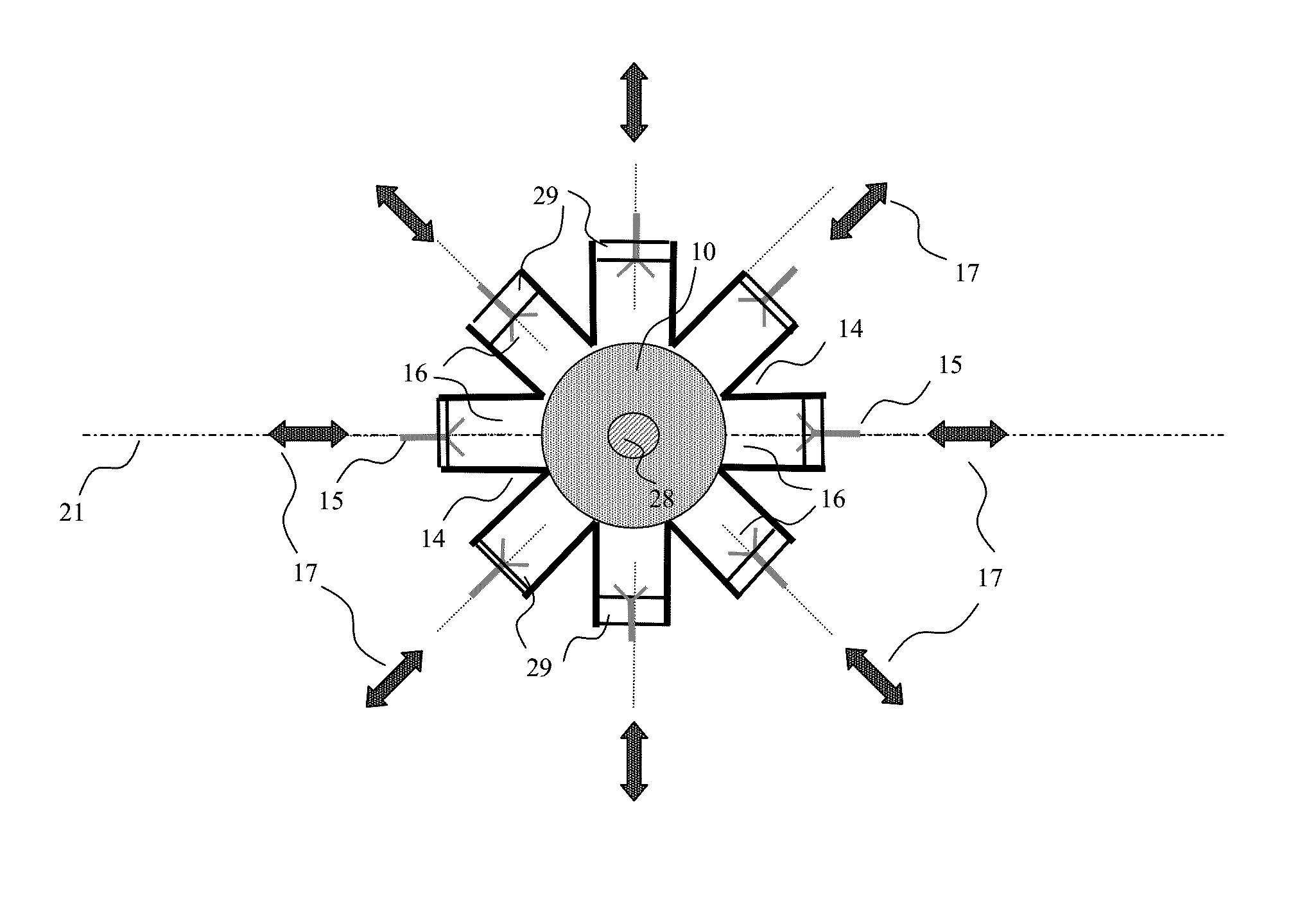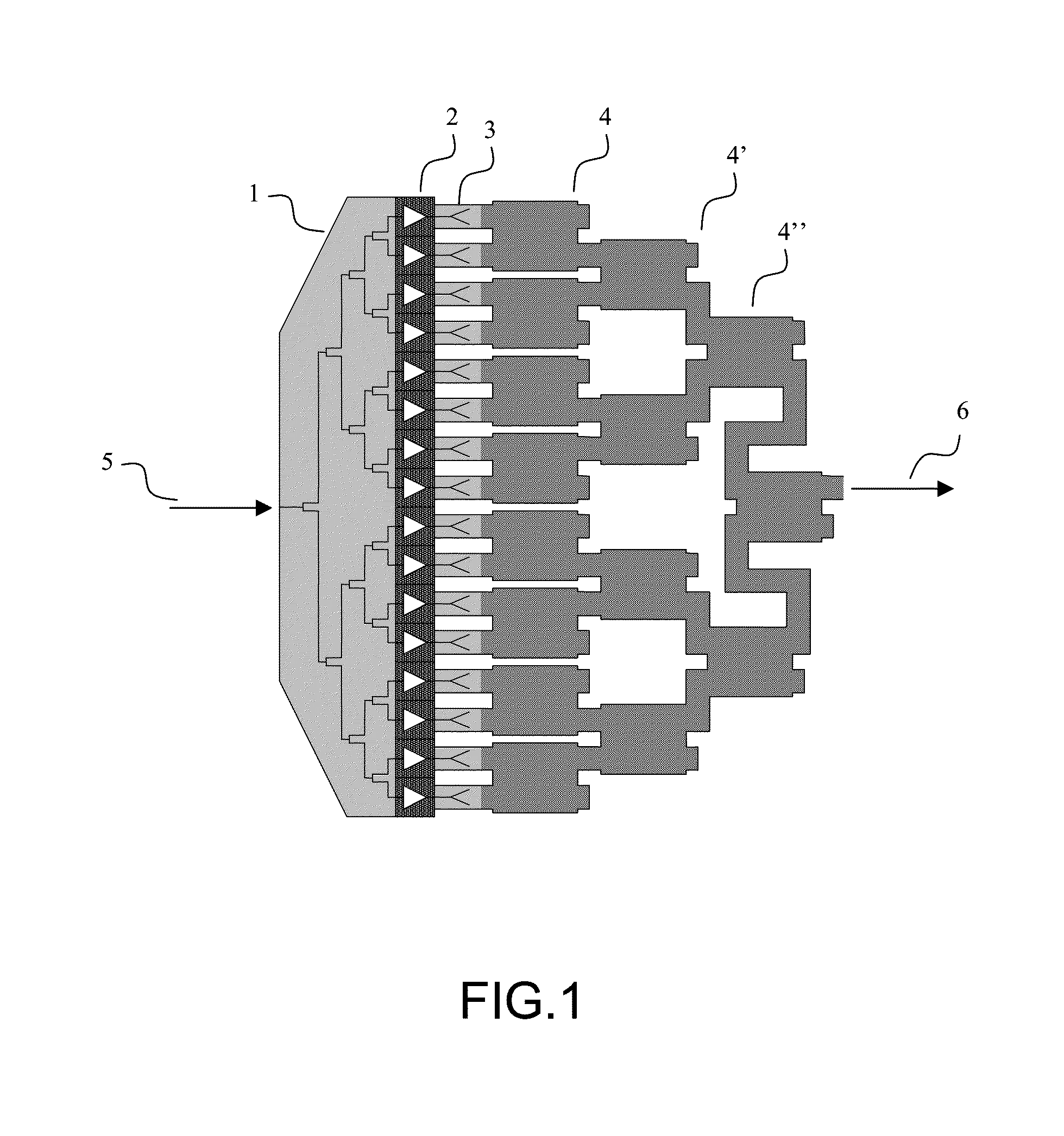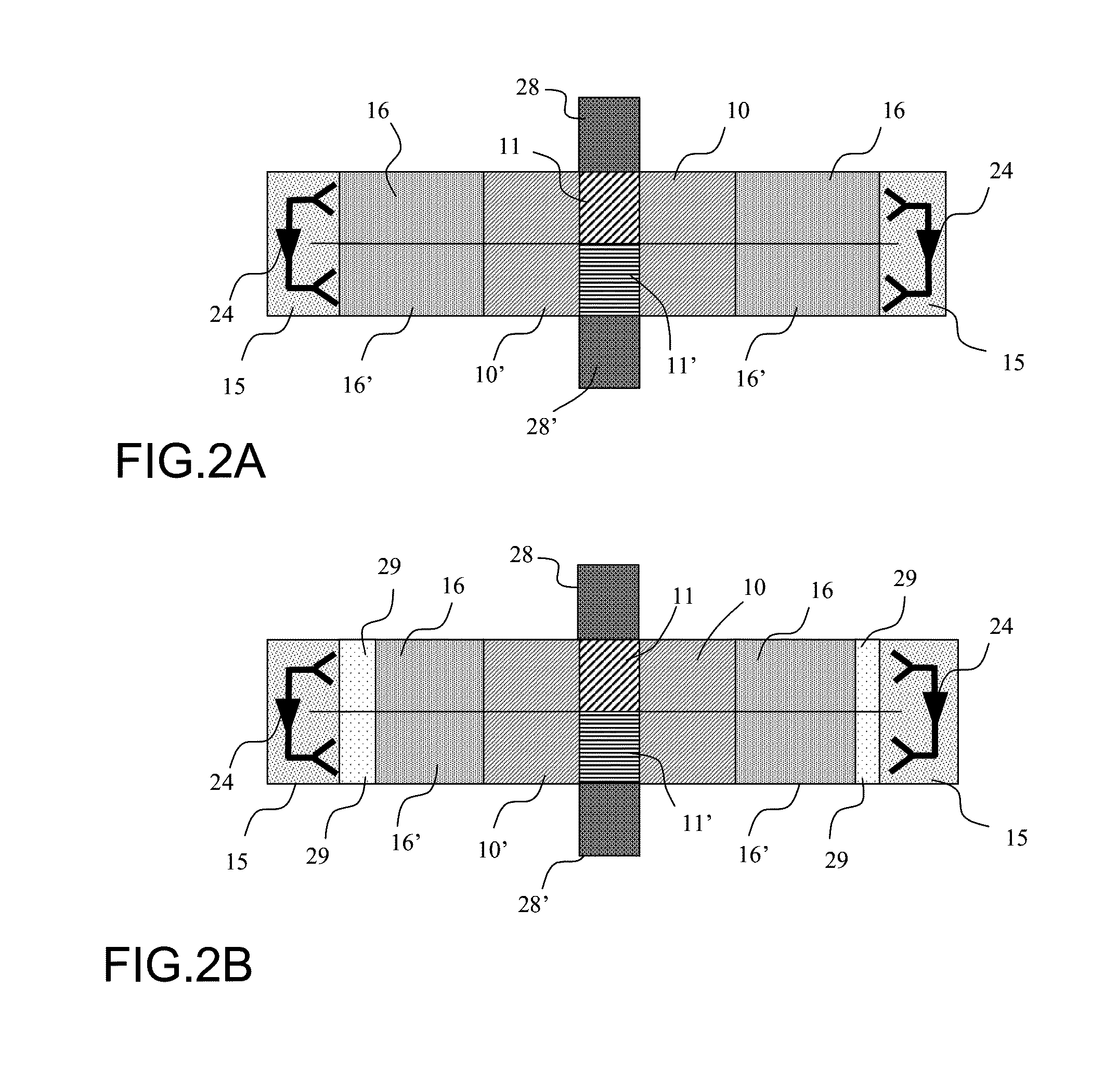Radial power amplification device with phase dispersion compensation of the amplification paths
a phase dispersion compensation and amplification path technology, applied in the field of microwave amplifiers with semiconductors, can solve the problems of insufficient and limiting combinations, inability to really effectively combine more than 4 individual amplifiers, and inability to combine a large number of amplifiers
- Summary
- Abstract
- Description
- Claims
- Application Information
AI Technical Summary
Benefits of technology
Problems solved by technology
Method used
Image
Examples
Embodiment Construction
[0060]In the following description, a “transition” is any device which allows the transition of an electromagnetic wave from one propagation structure to another with the minimum of transmission losses such as, for example, a coaxial line to a radial waveguide, or a rectangular waveguide to one or more planar lines of the microwave strip type, coplanar, slot, or any other medium.
[0061]FIGS. 2A and 2B illustrate a representation in the form of blocks in a section through a device of the prior art and of an amplification device according to the invention, respectively.
[0062]The device comprises a divider containing a first radial waveguide 10 which an input signal enters by means of a transition 11, the transition 11 propagating the signal between a port 28, of the coaxial waveguide, cylindrical waveguide or rectangular waveguide type, for example, and the radial waveguide 10.
[0063]The divider of the amplification device comprises, in the example of FIG. 2B, a radial waveguide 10 with...
PUM
 Login to View More
Login to View More Abstract
Description
Claims
Application Information
 Login to View More
Login to View More - R&D
- Intellectual Property
- Life Sciences
- Materials
- Tech Scout
- Unparalleled Data Quality
- Higher Quality Content
- 60% Fewer Hallucinations
Browse by: Latest US Patents, China's latest patents, Technical Efficacy Thesaurus, Application Domain, Technology Topic, Popular Technical Reports.
© 2025 PatSnap. All rights reserved.Legal|Privacy policy|Modern Slavery Act Transparency Statement|Sitemap|About US| Contact US: help@patsnap.com



